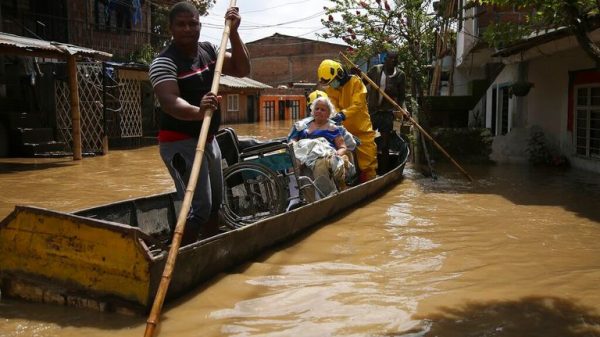Parts of Antarctica are turning green more quickly than previously thought, leaving scientists “shocked” at the impact of climate change in the region.
The area covered by vegetation in the Antarctic Peninsula is 10 times larger than four decades ago, a UK research team has said.
It means the 800-mile (1,300km) area in the northernmost part of the continent – could become vulnerable to invasive species as a result.
Using satellite data, researchers from the universities of Exeter and Hertfordshire, and the British Antarctic Survey studied how much the area has been “greening” in response to climate change.
For now, it remains almost entirely covered by snow, ice, and rock, with plant life growing on only a tiny fraction of the landscape, but that “tiny fraction has grown dramatically”.
In one part of the peninsula, vegetation grew from less than one square kilometre (0.6 square mile) in 1986 to almost 12 square kilometres (7.5 square miles) by 2021.
The pace of change has accelerated by more than 30% between 2016 and 2021 and the team said it showed anthropogenic climate change, or that caused by humans, which is a key contributing factor, “has no limit in its reach”.
Dr Thomas Roland, from the University of Exeter, said “the scale of the greening trend we found shocked us”.
Even in the peninsula, a “most extreme, remote and isolated ‘wilderness’ region… the landscape is changing and these effects are visible from space,” he said.
Calling for “meaningful action, co-operation and accountability”, he said it was “time to stop playing politics with our planet’s future”.
The study’s findings, he added, raise “serious concerns about the environmental future of the Antarctic Peninsula, and of the continent as a whole”.
Dr Olly Bartlett, from the University of Hertfordshire, said they were not surprised by the presence of the vegetation itself, but “it is the rate at which that vegetation cover is expanding that has shocked us”.
Many of the plants they found, typically mosses, lichens, liverworts, and fungi can grow on bare rock surfaces and “have been present for over 5,000 years”.
The research published in the journal Nature Geosciences, found that while the soil in Antarctica is almost non-existent, an increase in plant life will add organic matter and allow soil to form.
This could potentially pave the way for other plants to grow, they said.
He warned the “dramatic increase in vegetation will further develop and create new soils across the region, providing a medium in which non-native, and potentially invasive species can become established”.



























